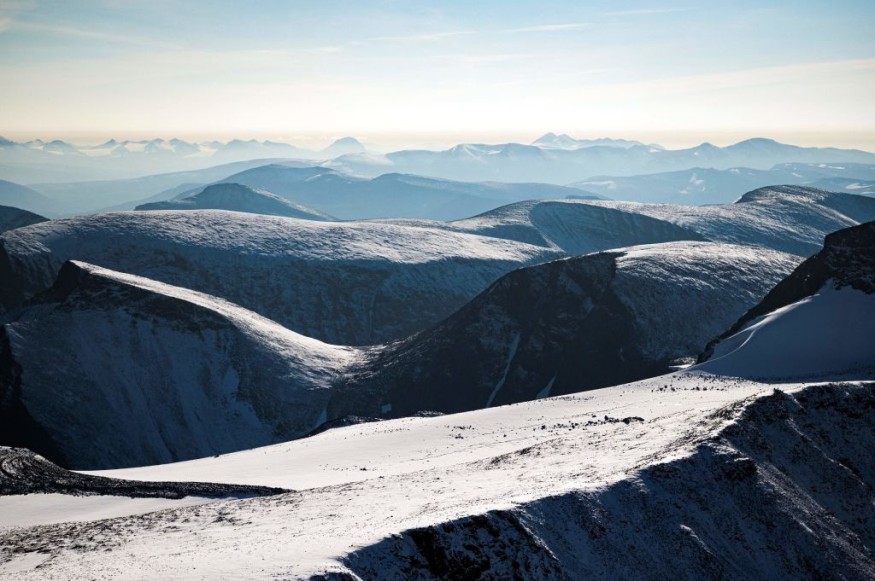
Scientists worry that human activities could trigger the release of "Factor X," an ancient microbial danger, from the permafrost.
Permafrost Harbors Mysterious Ancient Microbe Threat 'Factor X'
Scientists warn of a potential menace within Earth's permafrost. With ongoing global warming, dormant deadly diseases may emerge after centuries of concealment. The conflict in Ukraine hampers preparedness, while polar mining escalates the risk of unlocking this peril. Most concerning is "Factor X," a mysterious ancient microbe threat propelled by human activities.
Permafrost indicates ground frozen for over two years, with Siberian areas frozen for 650,000 years. Each gram harbors myriad dormant microbial species, their identities mostly unknown, shrouded in mystery within the frozen soil.
Resurrecting Viruses From the Permafrost
Professor Birgitta Evengård from Umeå University in Sweden highlights the uncharted territory of permafrost, stating its underexplored nature.
In 2014, French and Russian researchers revived a 30,000-year-old virus from Siberian permafrost, a non-threatening amoeba-infecting pandoravirus. This serves as a crucial proof of concept. Jean-Michel Claverie, the study lead, suggests the potential for animal/human-infecting viruses to endure similarly. Animal/human virus DNA has been found in permafrost.
Studies reveal microscopic creatures can revive from it. Climate scientist Kimberley Miner notes specific adaptation mechanisms in extremophiles within permafrost, enabling survival. Claverie underscores permafrost harboring extinct viruses like smallpox, and anthrax, and the heightened spread of current Arctic diseases like tularemia and tick-borne encephalitis. The permafrost holds a hidden reservoir of potentially dangerous pathogens, warranting deeper exploration and precautionary measures.
Pathogens From a Thawing Permafrost
In 2016, a Siberian anthrax outbreak claimed a 12-year-old boy's life and numerous animals due to warmer weather thawing permafrost, exposing a reindeer carcass housing dormant anthrax spores. Evengård explained anthrax's ability to endure centuries of dormancy. Upper permafrost layers may harbor known infections, yet deeper strata concern scientists. Ancient microbes, potentially pre-dating humans, reside there, for which humans lack natural immunity or effective treatments.
Evengård stressed an enigmatic "Factor X" within these ancient pathogens, potentially linked to our ancestors' demise. Claverie theorized these viruses might have affected Neanderthals or mammoths, influencing their extinction. Arctic warming accelerates permafrost thaw, raising concerns.
Additionally, migrating insects like mosquitoes may encounter these ancient viruses, with Claverie citing resident vectors amplifying the worst-case scenario of ancient virus transmission. The thawing permafrost poses diverse health threats beyond Claverie's worries.
Is Precious Metal Worth it?
Thawing permafrost poses multiple hazards beyond biology. Miner's research indicates the potential emergence of human-related threats: mercury, nuclear waste, bomb fallout, DDT, pesticides, and mining-derived heavy metals. 1,700 billion tons of carbon, once locked in the frozen soil, will convert to carbon dioxide upon thawing. Despite gradual climate change, humans expedite permafrost exploration.
As polar ice melts, prospectors seek riches, risking environmental consequences. Evengård warns of rapid mining for tech metals, endangering by delving deep into permafrost. The pursuit of precious metals may unwittingly unleash "Factor X" - an unknown peril from the frozen depths.
Carriers On The Move
Evengård emphasized the global repercussions if a sick miner travels unchecked, citing SARS' rapid worldwide spread. Thawing permafrost, covering a third of Earth, interconnects with oceans, atmosphere, and land, amplifying its impact beyond the Arctic. Understanding Arctic changes is crucial to curb climate warming's effects. Arctic warming renders polar regions habitable, heightening public health risks. Increased human exposure to thawed viruses due to industrial development accentuates these dangers.
Collaborative research interruptions due to the Ukraine conflict hinder understanding permafrost implications. Evengård stressed the necessity to resume research with Russian colleagues for accurate permafrost assessments.
A comprehensive public health strategy, considering zoonotic diseases and shifting species, is imperative. Evengård and Miner advocate melding nature, animal, and human health data for swift action, urging political involvement. Evengård insists on mitigating climate risks by slowing climate change as the foremost solution.
Related Article : Dormant Soil Nematode from Siberian Permafrost Recently Reanimated, Starts Multiplying in Petri Dish
© 2025 NatureWorldNews.com All rights reserved. Do not reproduce without permission.





